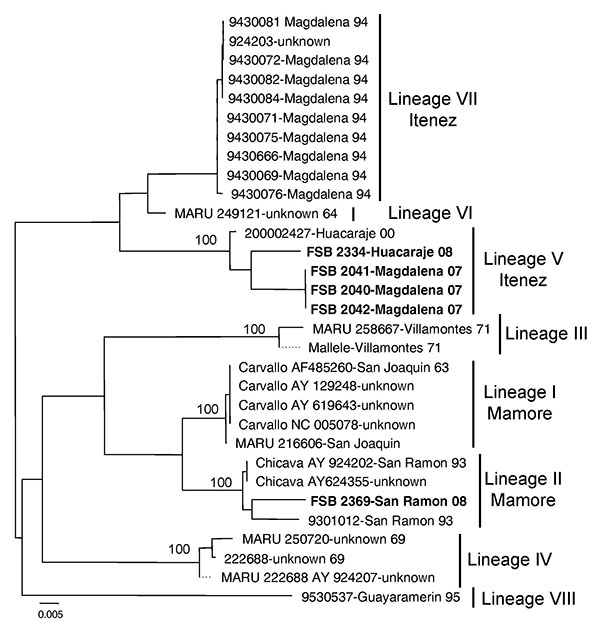Volume 15, Number 9—September 2009
Letter
Reemergence of Bolivian Hemorrhagic Fever, 2007–2008
Figure

Figure. Neighbor-joining phylogenetic tree of Machupo virus derived from the glycoprotein precursor gene sequence. The neighbor-joining and maximum likelihood analyses yielded similar phylogenetic trees. Boldface indicates 2007–2008 isolates. Numbers indicate bootstrap values for 1,000 replicates. Scale bar indicates nucleotide substitutions per site.
Page created: December 07, 2010
Page updated: December 07, 2010
Page reviewed: December 07, 2010
The conclusions, findings, and opinions expressed by authors contributing to this journal do not necessarily reflect the official position of the U.S. Department of Health and Human Services, the Public Health Service, the Centers for Disease Control and Prevention, or the authors' affiliated institutions. Use of trade names is for identification only and does not imply endorsement by any of the groups named above.